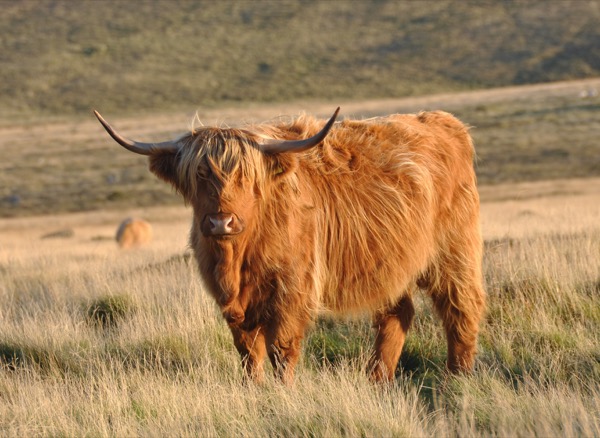Welcome to Facts Vibes! Meet the highland cow—a fascinating breed with a captivating presence. In this article, we’ll uncover intriguing fun facts about these majestic creatures that roam the highlands. Get ready to be wowed by their unique characteristics and endearing qualities. Let’s dive into the world of highland cows!
Discover the Fascinating World of Highland Cow Fun Facts
The Highland cow is a unique breed that has captured the attention of many due to its distinct appearance and interesting characteristics. Highland cows belong to the Scottish countryside, where they are well-adapted to the harsh climate and rugged terrain. Their long, shaggy hair protects them from the elements, making them well-suited for the often unpredictable weather in the region.
These remarkable animals are known for their impressive horns that can span up to 2 feet in length. Despite their imposing appearance, Highland cows are known for their gentle and docile nature. They are also excellent mothers, often giving birth to calves with minimal assistance.
One of the most fascinating facts about Highland cows is their ability to thrive on rough forage and withstand harsh conditions. They are efficient grazers, able to utilize a wide range of vegetation for sustenance. Additionally, Highland cows have a double coat that provides insulation, allowing them to endure cold weather with ease.
In conclusion, the Highland cow is a truly remarkable animal with a rich history and a set of unique traits that make it well-suited for its environment. Whether admired for their striking appearance or their resilience, these creatures continue to captivate the imagination of people around the world.
Most popular facts
Highland cows originate from the Scottish Highlands and are one of the oldest breeds of cattle in the world.
Highland cows originate from the Scottish Highlands and are one of the oldest breeds of cattle in the world.
Their long shaggy hair helps them withstand harsh weather conditions in their native environment.
Their long shaggy hair helps them withstand harsh weather conditions in their native environment.
Highland cows have a double-layered coat, with a thick, woolly undercoat for insulation and a longer, coarser outer coat for shedding rain.
Highland cows have a double-layered coat, with a thick, woolly undercoat for insulation and a longer, coarser outer coat for shedding rain.
These cows are well suited to rugged terrains and are excellent at foraging for food in hilly and mountainous regions.
The cows are well suited to rugged terrains and are excellent at foraging for food in hilly and mountainous regions.
Known for their gentle nature, highland cows are often described as docile and friendly.
Highland cows are known for their gentle nature and are often described as docile and friendly.
The breed is recognized for its distinctive long, curved horns that can span up to 30 inches (75 cm) in length.
The breed is recognized for its distinctive long, curved horns that can span up to 30 inches (75 cm) in length.
Highland cows are excellent mothers and have a strong maternal instinct in caring for their calves.
Highland cows have a strong maternal instinct and are known for being excellent mothers in caring for their calves.
They have a slow metabolism, which allows them to thrive on coarse vegetation and low-quality forage.
Animals with a slow metabolism can thrive on coarse vegetation and low-quality forage.
Despite their rugged appearance, highland cows are known for their high-quality, lean beef.
Despite their rugged appearance, highland cows are known for their high-quality, lean beef.
Highland cows are considered a hardy breed, with a natural resistance to many common cattle diseases.
Highland cows are considered a hardy breed, with a natural resistance to many common cattle diseases. Hardy breed with natural resistance to common cattle diseases.
Due to their friendly disposition and striking appearance, highland cows are popular subjects for photographers and artists.
Highland cows are popular subjects for photographers and artists due to their friendly disposition and striking appearance.
The breed has a distinctive “gruff” or “moo” that is deeper and more resonant than other cattle breeds.
The breed has a distinctive “gruff” or “moo” that is deeper and more resonant than other cattle breeds.
Highland cows are adept at conserving energy and can maintain body heat efficiently during cold winters.
Highland cows are adept at conserving energy and can maintain body heat efficiently during cold winters.
They are often used in conservation grazing programs to manage and improve natural habitats.
Livestock are often used in conservation grazing programs to manage and improve natural habitats.
Highland cows have become iconic symbols of Scotland, representing the country’s rugged landscapes and rich agricultural heritage.
Highland cows have become iconic symbols of Scotland, representing the country’s rugged landscapes and rich agricultural heritage.
In conclusion, highland cows are truly fascinating creatures with their unique physical traits and gentle nature. Their adaptability to harsh weather conditions and role in sustainable agriculture make them a valuable asset to the environment. These fun facts about highland cows serve as a reminder of the beauty and resilience of these majestic animals.
